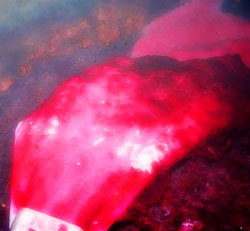Pumping-over operation
- 19 September 2012
- Last Updated: 19 September 2012
- Hits: 5129
Differents techniques are used for vinification but this one, pumping-over (called remontage in French), is very important.
Maintaining contact with the juice
Also called "remontage" in French, This technique aims to facilitate the diffusion of molecules from the solid part (seeds and skins) to the liquid. Otherwise the pomace will become increasingly dry since it floats on the surface of the juice. This technique also allows to homogenize the temperature in the tank: the top is always warmer during fermentation due to yeast activity.
A good question

Cap must be sprinkled evenly. Indeed, if the liquid is only projected at the same place along the pumping-over there is no real interest in using this technique, apart wasting valuable time and labor that would be more useful elsewhere. The fluid should enough water all cap must and even penetrate inside the must. Otherwise the juice/wine will always pass in the same place (like veins) without wetting the rest of the hat.
For most modern cellars tanks incorporate watering in their conception. In this document (french, but with pictures) from the website www.sk-group.biz you have several variants.
A similar, but different, vinification technique is "rack and return" (called "delestage" in French). In that case the liquid part of the must is emptied from the fermentation tank and then pumped back over the solid parts that remained in the tank. This gives an even stronger extraction of anthocyans and polyphenols.
Humidification of the pomace is a key element of fermentations. How is carried out this technique should be an unavoidable issue for oenologists.
{jacomment on}














